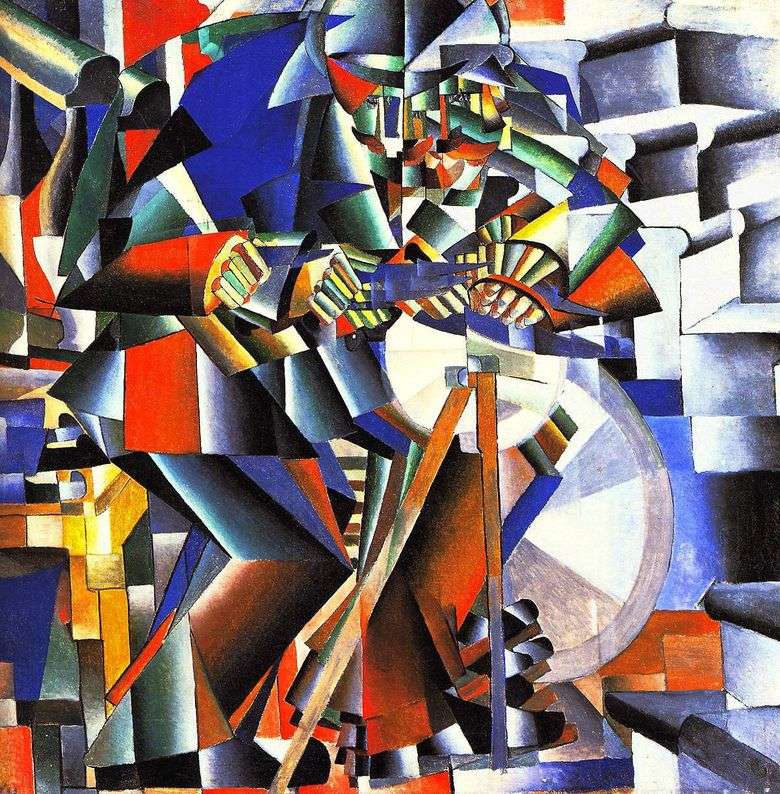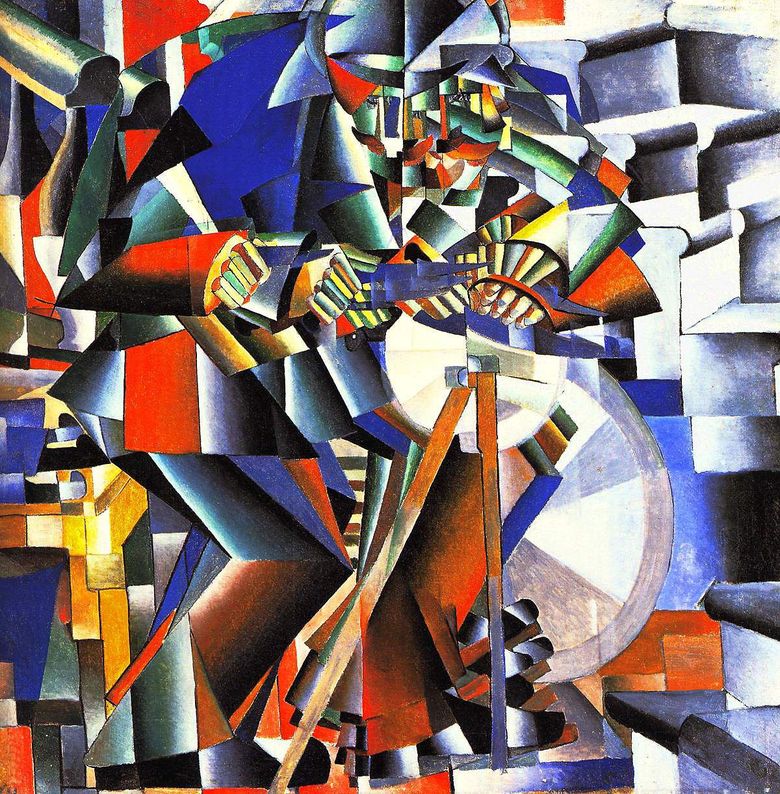
Cubism with its decomposition of forms. Futurism, proclaiming the primacy of the energy of motion in modern life. Combining the principles of two progressive trends in world art, Russian masters of painting created their own, original direction – cubofuturism. The work of K. Malevich “Grinder” today is a classic work of this new “-ism” of the XX century.
The second, additional name of the picture – “The principle of flickering”. It as if gives a hint about what the artist wanted to achieve and what he tried to convey to the viewer. In the numerous repetition of endlessly crushing faces, silhouettes and contours, in a steel color with the inclusion of rusty-red-orange spots, the rhythmic flickering of a cleverly tread knife, the movements of a foot pushing a pedal are almost physically felt, the turns of the head of a person who closely follows his work are guessed. Without repetitions and broken lines, only the grinding wheel and the wheel are shown, but even they are transmitted by the artist in the movement.
For the pile of repetitive subject series, it is difficult at first to make out the space surrounding the grinder. But when looking at the eye remotely, something opens that resembles steps – on the right and a railing with balusters – on the left, which at first glance seemed unrelated to each other by rails and bottlenecks. For the figure of a working person, the outlines of the table are yellow, and a large white vase at the railing.
The picture is in keeping with the spirit of the epoch – it is charged with a positive mood of technical achievements, filled with the energy of infinite movement forward.
Written back in 1912, the work was sent by Malevich to the First Russian Exhibition of 1920. Here the painting was bought by an American artist and transported to the United States, where he is currently located.
 Grinder – Kazimir Malevich
Grinder – Kazimir Malevich Still Life by Kazimir Malevich
Still Life by Kazimir Malevich Portrait of the artist M. V. Matyushin by Kazimir Malevich
Portrait of the artist M. V. Matyushin by Kazimir Malevich Reapers by Kazimir Malevich
Reapers by Kazimir Malevich Peasant woman with buckets by Kazimir Malevich
Peasant woman with buckets by Kazimir Malevich The head of a peasant by Kazimir Malevich
The head of a peasant by Kazimir Malevich Grinder – Kazimir Malevich
Grinder – Kazimir Malevich Black Square by Kazimir Malevich
Black Square by Kazimir Malevich